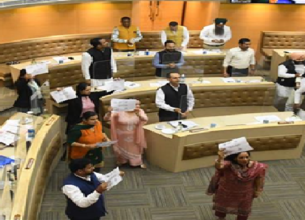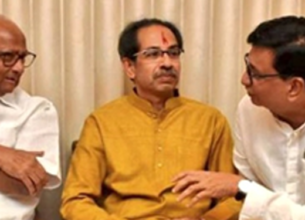GOVERNOR’S RIGHT IN ORDERING FLOOR TEST
16, Apr 2020

Prelims level : State Legislature
Mains level : GS-II Parliament and State Legislatures - structure, functioning, conduct of business, powers & privileges and issues arising out of these.
Why in News?
- The Supreme Court has upheld Madhya Pradesh Governor Lalji Tandon’s March decision asking the then Congress government to prove majority by holding a floor test in the Legislative Assembly after the resignation of 22 Congress MLAs.
What is a Floor Test?
- A floor test is the determination on the floor of the House (in this case, the Maharashtra Vidhan Sabha) whether the Chief Minister commands the support of the majority of the MLAs.
- This can be done by means of a voice vote, or by recording the vote of each MLA in the House. This determination of majority is done in a sitting of the legislature, for which the legislature has to be convened.
How Floor Test Takes Place?
- This voting process happen in the state’s Legislative Assembly or the Lok Sabha at the central level.
- Technically, the chief minister of a state is appointed by the Governor. The appointed chief minister usually belongs to the single largest party or the coalition which has the ‘magic number’. The magic number is the total number of seats required to form a government, or stay in power. It is the half-way mark, plus one. In case of a tie, the Speaker casts the deciding vote.
- However, at times, a government’s majority can be questioned. The leader of the party claiming majority has to move a vote of confidence.
- If some MLAs remain absent or abstain from voting, the majority is counted on the basis of those present and voting. This effectively reduces the strength of the House and in turn brings down the majority-mark.
- The voting process can happen orally, with electronic gadgets or a ballot process.
- The Governor can also ask the Chief Minister to prove his or her majority in the House if the stability of the government comes into question.
What is Confidence and No-confidence Motion?
- A confidence motion or a vote of confidence or a trust vote, is sought by the government in power on the floor of the House.
- It enables the elected representatives to determine if the Council of Ministers commanded the confidence of the House.
- The idea underlying the trust vote is to uphold the political accountability of the elected government to the State legislature.
- A no-confidence motion, or vote of no-confidence, or a no-trust vote, can be sought by any House member to express that they no longer have confidence in the Government.
What are the Observations made by the Court?
- In a situation where the governor has reasons to believe that the council of ministers headed by the chief minister has lost the confidence of the House, constitutional propriety requires that the issue be resolved by calling for a floor test.
- The governor in calling for a floor test cannot be construed to have acted beyond the bounds of constitutional authority. This means, while directing a trust vote, the Governor should not favour a particular political party.
- A Governor’s power to call for a floor test is not restricted only before the inception of a State government immediately after elections, but continues throughout its term.
- The Governor’s requirement to have a trust vote does not “short-circuit” any disqualification proceedings pending before the Speaker. A Governor need not wait for the Speaker’s decision on the resignation of rebel MLAs before calling for a trust vote.













